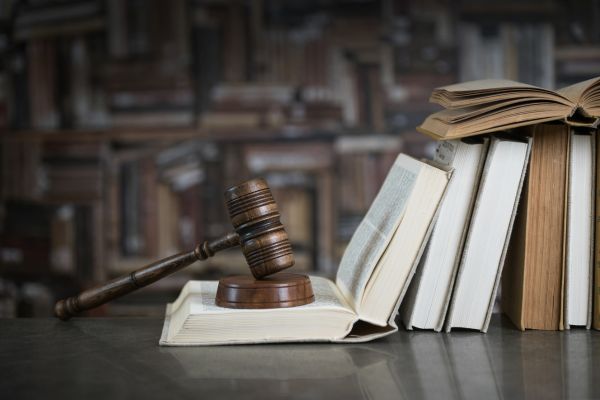As we speak, privacy is deemed an unclear concept and complicated more so to celebrities and famous personalities given that the division of public and private life was fused in the current society. Being in the limelight frequently, or being followed by paparazzi; and in an era of Twitter, Facebook, and a constant flow of information that takes no peace, it’s tough to claim one’s privacy. Present-day privacy laws and celebrities’ rights have been developed to fit into such complexities to prevent people from being intruded on and the same time ensure to public’s right to information.
Previously, privacy laws were formulated to shield persons from the invasion of privacy, defamation, and misuse of their identity, but due to the advent of the entertainment world new formulations to protect celebrities were called for. Celebrities display their identities, and popularity, and turn it into cash; they lend their voice, identity, names, and faces to commercials for cash though there have been various incidences where they are used in adverts without their consent, and they cannot decide where they are wanted, and where they are not.
Celebrities are always harassed by various supposed photographers who intrude on their space to capture images of them for whatever views they wish, the leakage of personal information is as common with fame-owning celebrities without their permission. Another bad example that is easily observed is misrepresentation and defamation are overspread where so many rumors get spread that it is all fake and degrades the celebrity in the long run.
Who is a celebrity?
Movie actors, singers, chief executives, musicians and models, sportsmen and sportswomen, musicians, politicians, writers, and anyone who gains the public’s interest including reality TV stars; are all categorized as celebrities. Definition by reference to public image is the most common way of identifying celebrities among the population.
The Indian Copyright Act[1] does make no provision regarding what constitutes a ‘celebrity’. But reference can be made to definitions under Section 2(qq) where a performer has been described. Being a celebrity is not the same as being a performer and vice versa, simply because a performer may not be a celebrity all the time whereas a celebrity may not be a performer. The word performer means any person who by the provisions of this act becomes an actor, singer, musician, dancer, acrobat, juggler, conjurer, snake charmer, a person delivering a lecture, or any other person who makes a performance. Section 38 of the Act provides a special right or performers’ right in favor of any performer who appears or participates in any performance about such performance and that right shall be for fifty years from the commencement of the calendar year next following the year in which the performance is given.
Need to protect celebrity rights
In the modern world, publicity is equivalent to huge sums of money, and the establishment of the celebrity’s image is very valuable. This valuable asset is recognized as a property means that the same would be subjected to taxation as a capital asset like any other intellectual property.
This leads to efficiency in resource allocation as both the public and celebrities themselves benefit because of the moral right that the celebrities possess to gain money out of the fame they have attained. Secondly, the right to publicity is personal and hence passes on to the heirs of the celebrity. Therefore descendants of a celebrity can gain from the popularity created by the celebrity during his/her lifetime Thirdly, to protect performers T
his study aims at seeking to establish the following reasons; (i) reducing insecurity among the performers due to technologized unemployment such as the replacement of musicians by recorded music; (ii) preventing piracy; and (iii) regulating exploitation of performers who sometimes cannot handle the situations on their own. While it is evident that there exists a need to protect celebrities the question is how far.
Whether celebrities should be allowed exclusive rights in a situation where they actively participate in controlling the process of self-representation, looking for people’s support, and living off the audience’s acclaim is a question that many have on their minds.[2]
Protection of celebrity rights
In India presently there are very scanty case laws, and to the best of my knowledge, there was no separate statute that provided celebrity rights. Thus, the legal system in India, at present, is quite incompetent to handle the contemporary factors of endorsement advertising. However, the market has its dynamics and does not expect the law to perform the task. The Hon’ble Deliver High Court, in ICC Development (International) Ltd v Arvee Enterprises, crystallized its opinion on the balance of publicity rights, which itself is the first, and to date, the only discussion turned out on Indian legal jurisprudence. The right of publicity as a branch of the right of privacy can be asserted only about an individual or anything that symbolizes this individual, for instance, his name, specific character feature, signature, voice, and so on.
Celebrities and commercial partners can technically get some trademark protection in India under the trademark law though the protection granted may not be comprehensive. Rule 2 of the Indian Trade Marks Act, 2000,[3] permits any ‘sign which is capable of being used to identify goods and services of a particular person and the name or numeral or word which may be distinctive of a particular person, or a design, or shape of goods or their packaging’ to be registered as a trademark. Indian courts have given legal protection to the titles of films along with characters and names under the trademarks. 14 The first case that emanated in the area of character merchandising in India is Star India Private Limited v Leo Burnett India (Pvt) Ltd[4], but character merchandising is still growing throughout the Indian legal sphere.
Section 13(4)[5] suggests that aspects of film which are individually creative are capable of being copyrighted. In the case of Manisha Koirala v Shashilal Nair,[6] the court laid down whether an actor’s on-screen image may be protected and whether there was a need to protect against distortion or dishonor. In Fortune Films v Dev Anand,[7] it was stated that acting in theatre does not come within any category of work. Section 38(4) excludes the performer’s right by saying that ‘once a performer has consented to the incorporation of his performance in a cinematograph film, the provisions of sub-sections (1), (2) and (3) shall have no further application to such performance. Moral rights are given to the authors and an actor who performs the roles in the movie is not considered as an author. [8]
Conclusion
In contrast to India, it is important to understand that no legal monopoly for granting permissions regarding public performances and broadcasting them belongs to anyone.
Thus, only secondary rights are provided to forbid public performance broadcasting or recordings without the performers’ permission and to gain reasonable remuneration. Therefore, while there are economic entitlements there are no moral remedies for right holders. Protection is granted only to the outer aspects of works and landmarks, however, no safeguard is provided against ‘substantial similarity’ which is an important component of celebrity rights protection.
References
1) Martin Luther King Jr Center for Social Change v American Heritage Products Inc, 694 F.2d 674 (11th Cir 1983)
3) Datta A, Celebrity rights: A legal overview, http://www.goforthelaw.com/articles/fromlawstu/article31.html
4) McCarthy J Thomas, The Spring 1995 Horace S Manges Lecture: The Human Persona as Commercial Property: The Right of Publicity, Columbia-VLA Journal of Law and the Arts, 19 (1995) 131.
[1] Indian Copyright Act,1957.
[2] Robertson v Rochestor Folding Box (1902) 171 N.Y. 538; 64 N.E. 442; N.Y. LEXIS 881.
[3] Rule 2, Trade Marks Rules, 2002.
[4] 2003 (26) PTC 245 (Del).
[5] Section 13 (4),copyright act 1957 .
[6] (2003) 3 SCC 395.
[7] (2003) 2 SCC 604.
[8] Pareek A et al., Protection of celebrity rights-The problems and the solutions, Journal of Intellectual Property Rights,
Author: Urvashi Khandelwal is a 4th year student at Institute of Law, Nirma University






